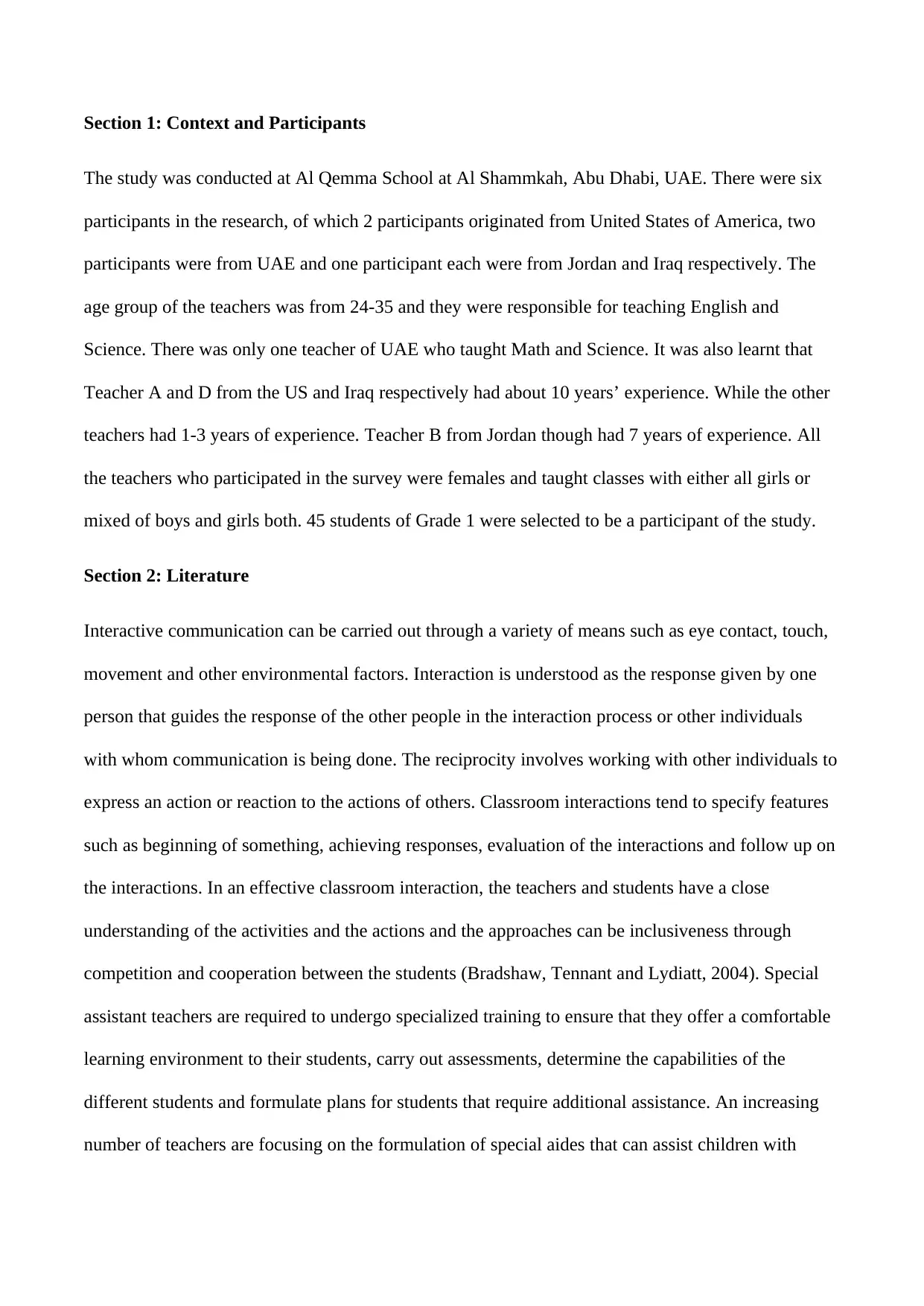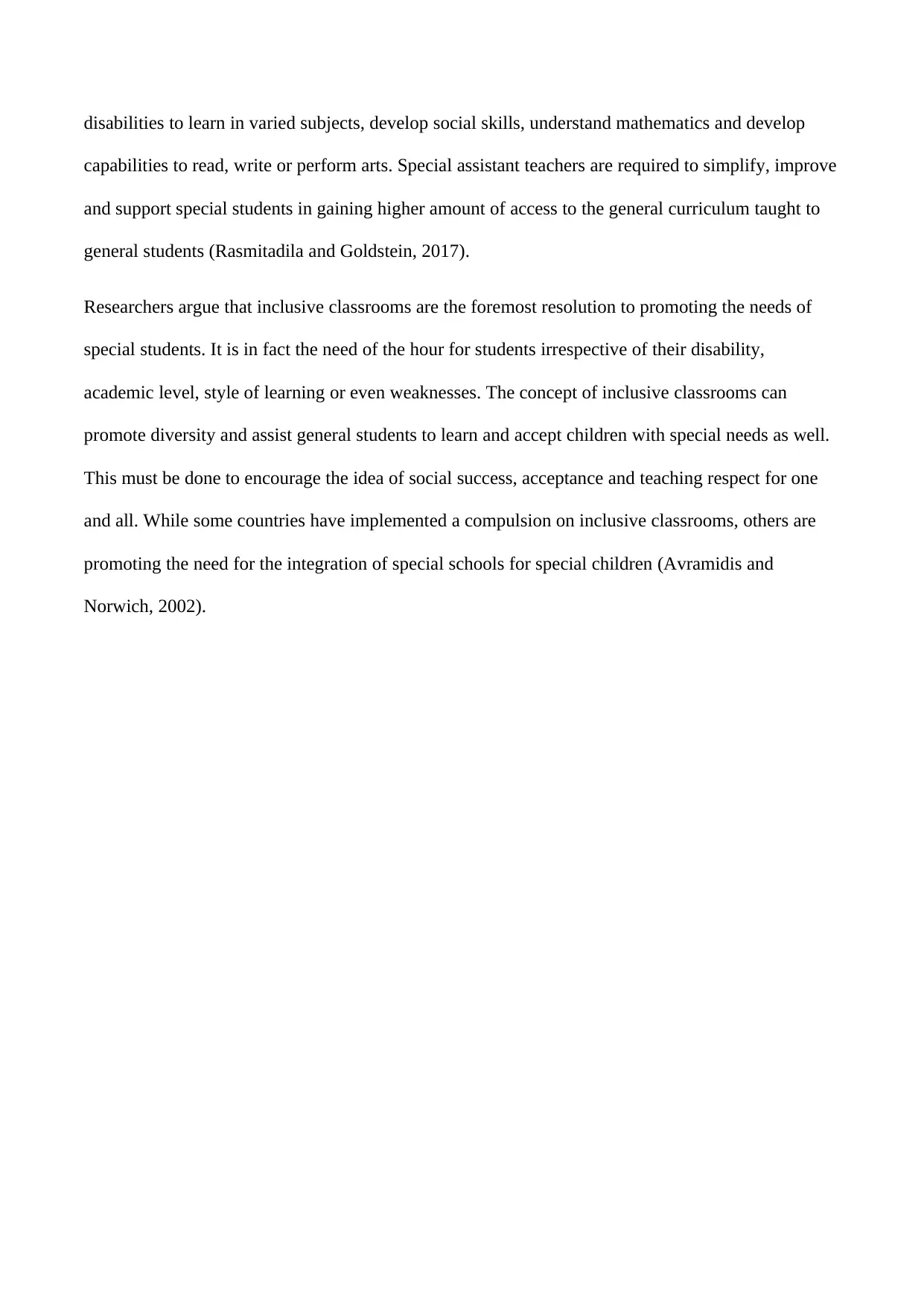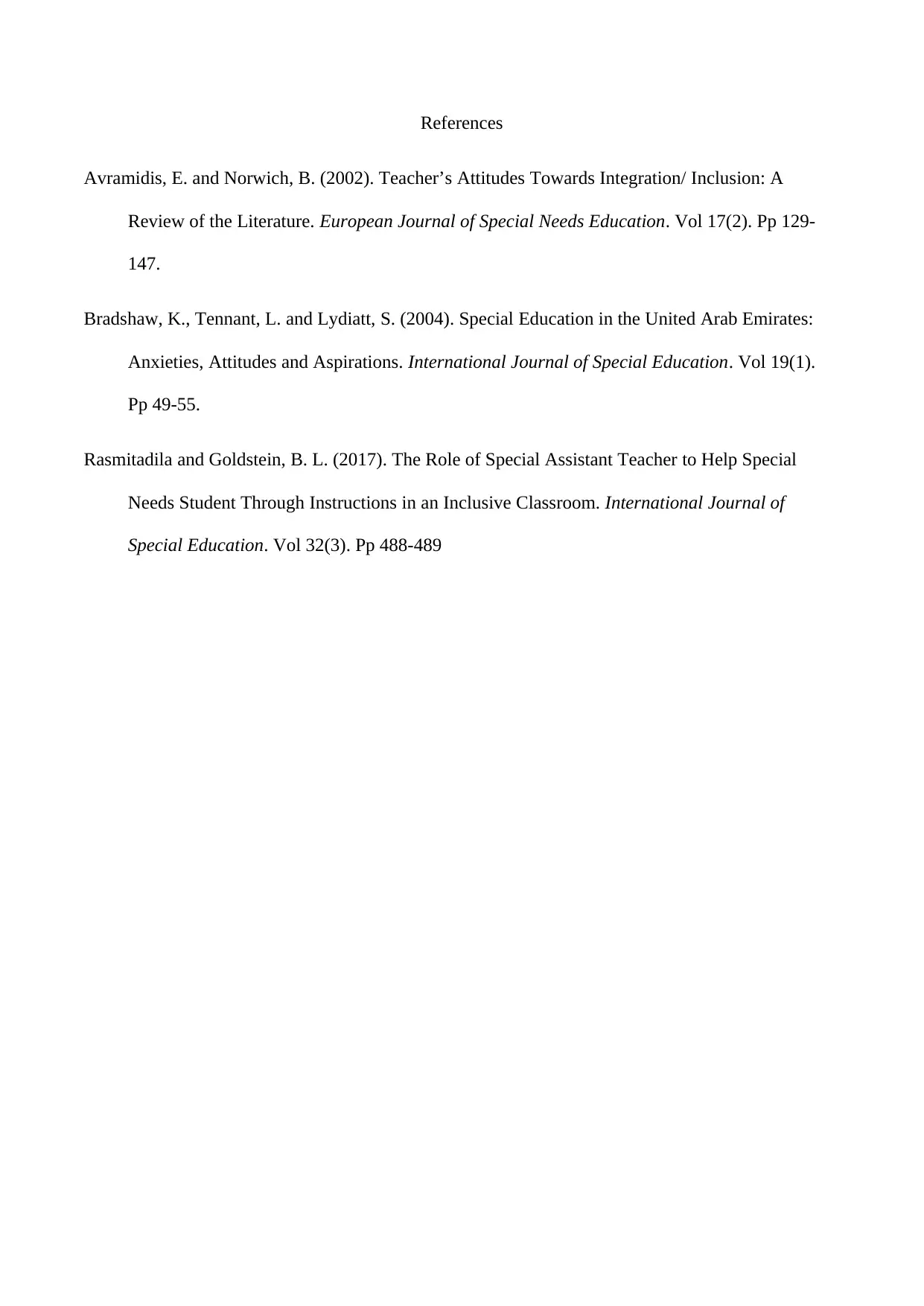Analysis of Classroom Interactions: Al Qemma School, Abu Dhabi, UAE
VerifiedAdded on 2023/01/03
|3
|690
|75
Report
AI Summary
This report presents a study conducted at Al Qemma School in Abu Dhabi, UAE, examining classroom interactions. The research involved six female teachers from diverse backgrounds, teaching English, Science, and Math to Grade 1 students. The study explores the concept of interactive communication, emphasizing the importance of teacher-student interactions and the role of special assistant teachers in inclusive classrooms. The literature review highlights the significance of inclusive classrooms in promoting diversity, social success, and acceptance of students with special needs. The report references key publications in the field, discussing teacher attitudes, special education in the UAE, and the role of special assistant teachers. The findings underscore the need for specialized training for teachers to create supportive learning environments and address the diverse needs of all students.
1 out of 3










![[object Object]](/_next/static/media/star-bottom.7253800d.svg)